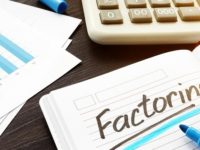Asialink Business – the National Centre for Asia Capability – is supporting an Australian Government initiative to work with regional partners to foster women in innovation and STEM leadership.
Delivering the keynote address at the recent launch in Melbourne, the Minister for Industry, Innovation and Science, the Hon Karen Andrews, said, “Change is happening at a rapid rate. This demands a skilled workforce that will drive economic growth into the future…ASEAN nations and Australia will need to promote and drive an innovation mindset by investing in upskilling our workforces. Skills in science, technology, engineering and mathematics, or STEM, play a crucial role in innovation, which is a key driver of economic growth.
“The barriers girls and women face in these subjects and careers mean that a special effort needs to be made on their behalf. This is true for many of the economies in our region, including Australia, irrespective of the culture. Low representation of women in the STEM skilled workforce not only denies women opportunities, it means that the full innovation potential of our region is not being realised,” the Minister added.
Australia currently faces a shortage of three million workers with digital literacy skills. Meanwhile, in Southeast Asia, by 2028 over 6.6 million workers will need to transition to new occupations as a result of rapid automation. This skills mismatch is exacerbated by low participation of women in innovation and STEM fields: Currently, just 17 per cent of the STEM workforce in Australia are women, while in the ten ASEAN countries of Southeast Asia, women make up just 17 per cent of all STEM students.
Asialink Business CEO, Mukund Narayanamurti said, “With technology driving demand for new skills, enhancing human capital in innovation and STEM will be critical for the future of work. Australia has a shared challenge and opportunity to work with our Southeast Asian neighbours to address the critically low representation of women in STEM and innovation that is hindering growth.”
He added, “Many impressive initiatives are already underway across Southeast Asia. Australia not only has much to share, but also much to learn from the innovation ecosystems of countries like Singapore, Vietnam, Indonesia and Malaysia, and elsewhere in the Indo-Pacific.”
As part of the forum, Asialink Business launched new research outlining the economic rationale for increasing the participation of women in innovation leadership and highlighting examples of regional best practice. The Showcasing Women Innovation Leaders in Australia and Southeast Asia report, developed with support from the Australian Government Department of Industry Innovation and Science, analyses the technological trends reshaping the global economy and underlines the importance of enhancing leadership pathways for women in that field.
Australia’s inaugural Women in STEM Ambassador, Professor Lisa Harvey-Smith, who was a panellist at the launch event said, “It’s important that women who are looking to develop careers in innovation and STEM have visible role models. The more women in innovation leadership roles, the greater the positive flow-on effects for women entering or progressing in these fields.”
The strategic launch catalysed discussion in advance of the ASEAN Women in Innovation Leadership Dialogue announced by Minister Andrews in June 2019. This will be hosted as part of the annual World Economic Forum ASEAN meeting in Jakarta in 2020. It will bring together leaders in science, technology, engineering, and mathematics (STEM), supported by business leaders, policymakers, innovators and influencers to showcase talented women innovation leaders and boost the level of human capital in the region.













